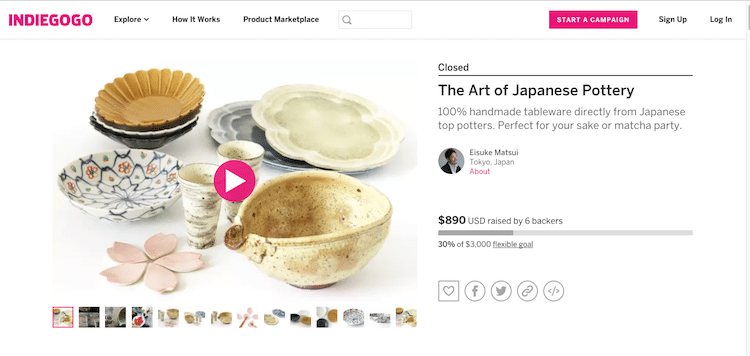
This post may contain affiliate links. If you make a purchase, My Modern Met may earn an affiliate commission. Please read our disclosure for more info.
As artists and creatives, innovative ideas and projects are some of the most precious currency we possess. But for all the ideas in the world, execution of these visions can often seem daunting. One of the biggest hurdles to overcome is often getting the funding needed to get the project off the ground.
Luckily, raising funds has become more democratic in the past 15 years, with the rise of crowdfunding. First used primarily to fund small businesses, artists are increasingly turning to these platforms to make their dream projects a reality. While many people associate crowdfunding with projects like the Flow Hive, high powered artists—even Neil Young—have been using the system to take their ideas to the public.
As crowdfunding has evolved, so have the platforms. Time has given rise to websites catering specifically to creatives, while different systems even allow for ongoing payment and support. It just takes looking at what’s right for the specific artist and situation.
But once you’ve settled on a crowdfunding platform, how do you make sure your campaign is successful? Part of this goes into the selection of where you’ll be doing your fundraising—certain platforms have higher success rates than others—but the rest will go into your ability to successfully market your ideas.
Let’s take a look at some of the best options for making your creative dream a reality and how to set your campaign up for success.
Which crowdfunding platform to use?
You should never underestimate how important this decision is. Do you go with one of the big fish and risk your project getting lost in the stream of ideas? Or do you venture into a niche platform that caters only to your sector, but may not have as much visibility? Other questions to ask yourself: do you want to risk a “winner takes all” campaign, where you only receive the money if you meet your goal, or would you prefer a platform that lets you collect any funds received, even if you don’t meet your goal?
Here are a few crowdfunding platforms that cater to creatives with big ideas. Each will have their pros and cons—including the amount of commission and whether or not donations are tax deductible—so be sure to read the fine print when making your final decision.

Kickstarter: Let’s face it, when most people think of crowdfunding, they think of Kickstarter. It’s the biggest platform out there and has raised more than $2.8 billion to date. They have 15 different campaign categories, with several options for creatives, meaning you are sure to find your niche. The downsides? All campaigns are all-or-nothing, so they have to be launched and planned carefully—especially when you consider that a little over 60% of Kickstarter campaigns fail to reach their goal. But with a little marketing know-how, you can try to get your campaign noticed by the media for a welcome boost.
Indiegogo: If you’re looking for more flexibility, but the backing of a powerhouse platform, Indiegogo may be for you. You are allowed to choose between “all-or-nothing” and “keep what you earn” campaigns, making it an attractive alternative for many. With no application or approval process, you can also get your idea up and going quickly.
Patreon: Looking to create a stream of revenue that can allow you to focus on your creative goals? Patreon may be for you. The service allows you to collect monthly income from your fan base, who subscribe to different levels of support. Specifically focusing on creators, you can also give your patrons with special content or other rewards to make them feel included in the creative process. Watch Christine Donaldson of Patreon explain how to use the service to monetize your creativity.
 GoFundMe: GoFundMe isn’t just for personal causes, like medical care or disaster relief. In fact, more and more people are turning to the Creative category for help with everything from publishing photography books to staging theater performances. With no time limit and the ability to keep all the funds raised, this platform can be the ideal solution depending on your project.
GoFundMe: GoFundMe isn’t just for personal causes, like medical care or disaster relief. In fact, more and more people are turning to the Creative category for help with everything from publishing photography books to staging theater performances. With no time limit and the ability to keep all the funds raised, this platform can be the ideal solution depending on your project.
FotoFund: FotoFund is a platform that specifically caters of photographers and is run by the Lucie Foundation. In fact, 4% of funds raised go back into the foundation to run their programs, including artist grants. This is an all-or-nothing platform, so if you don’t achieve your goal, you won’t get the funds pledged.
Seed&Spark: This crowdfunding site caters to filmmakers, and has raised over $7 million dollars since starting in 2012. Seed&Spark also boasts an impressive 75% success rate in getting their projects funded. And best of all, they are also a streaming service, allowing you to watch independent films and television series.
Artist Share: Founded in 2001, Artist Share boasts of being the internet’s first crowdfunding platform. Catering to musicians, funded projects have garnered 10 Grammy awards and 29 Grammy nominations.
